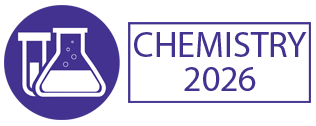Drug Designing
Drug designing is a multifaceted process that involves the meticulous integration of various scientific disciplines to develop novel pharmaceutical compounds. It encompasses a plethora of methodologies and techniques aimed at identifying, designing, synthesizing, and optimizing molecules with therapeutic potential. At its core, drug designing seeks to address unmet medical needs by creating medications that are efficacious, safe, and target-specific. This intricate process typically begins with target identification, where crucial biological molecules or pathways associated with a disease are pinpointed for intervention. Utilizing techniques such as bioinformatics, structural biology, and computational modeling, researchers analyze the three-dimensional structures of target proteins and elucidate their functions.
The next step in drug designing involves the identification or generation of lead compounds, which are molecules exhibiting promising interactions with the target. This phase often entails high-throughput screening of compound libraries or employing rational drug design strategies to modify existing molecules. Structure-activity relationship (SAR) studies play a pivotal role during this stage, guiding medicinal chemists in refining lead compounds to enhance their potency, selectivity, and pharmacokinetic properties. Computational tools like molecular docking and QSAR (quantitative structure-activity relationship) facilitate the prediction of ligand-receptor interactions and aid in the rational design of optimized drug candidates.
Once potential drug candidates have been identified, they undergo rigorous preclinical testing to evaluate their efficacy and safety profiles. This phase involves in vitro assays, animal studies, and pharmacokinetic assessments to ascertain the compound's biological activity, toxicity, and ADME (absorption, distribution, metabolism, and excretion) properties. Compounds demonstrating favorable preclinical results advance to clinical trials, which consist of a series of phased human studies designed to assess the drug's safety, tolerability, and efficacy in patient populations. These trials adhere to stringent regulatory guidelines and involve progressively larger cohorts of volunteers or patients.

Hossam A Gabbar
Ontario Tech University, Canada
Victor John Law
University College Dublin, Ireland
Alexander Bagaturyants
National Research Nuclear University MEPhI, Russian Federation
Sergey Suchkov
N.D. Zelinskii Institute for Organic Chemistry of the Russian Academy of Sciences, Russian Federation
Shree Niwas Chaturvedi
Centre for Aptitude Analysis and Talent Search, India
Pieter Samyn
SIRRIS, Belgium




Title : Advances in plasma-based radioactive waste treatment
Hossam A Gabbar, Ontario Tech University, Canada
Title : Unraveling the ultrastructure and functions of the neuronal membrane skeleton using super-resolution fluorescence microscopy
Zhou Ruobo, Djillali Liabes University of Sidi Bel Abbes, Algeria
Title : Solar box cooker dehydration, and relative humidity endpoint detection, of lamiaceae culinary leaves on the island of Crete
Victor John Law, University College Dublin, Ireland
Title : Nutrient and heavy metal loads from the Ribeiras to Coastal zones: A land-ocean continuum perspective in Madeira Island
Aracelis Del Carmen Narayan Rajnauth, University of Porto, Portugal
Title : Prospective polyoxometalate-based covalent organic framework heterogeneous catalysts
Arash Ebrahimi, Comenius University Bratislava, Slovenia
Title : Eliminating implant failure in humans with nano chemistry: 30,000 cases and counting
Thomas J Webster, Brown University, United States